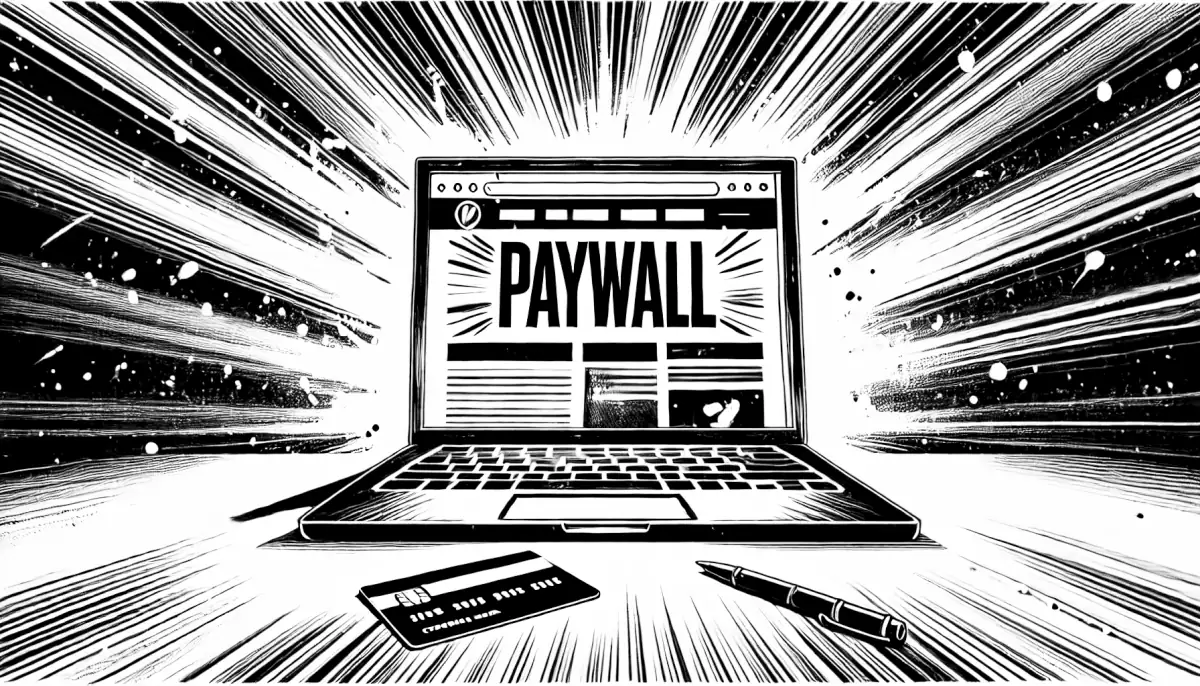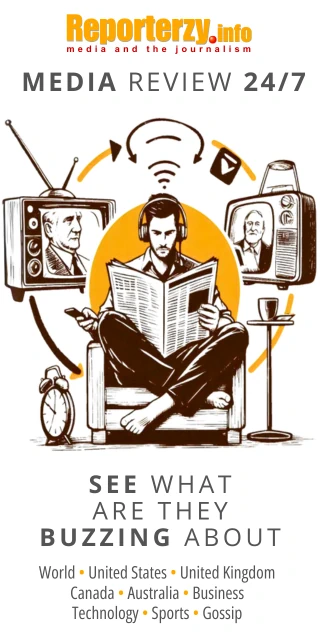 illustration: DALL-E
illustration: DALL-EFor three years, the percentage of internet users paying for digital news has hovered around 18 percent. Authors of the "Digital News Report 2025" published by Reuters surveyed 94,943 people in 47 countries and saw no surge despite the pandemic and information wars. The share of subscribers to journalistic content was 17 percent in 2023, 18 percent in 2024, and again 18 percent in 2025. Nic Newman from the Reuters Institute, author of the media economy chapter, notes several important observations:
- 18% of global internet users pay for digital news content
- +1 p.p. total growth since 2023
- 13% of women report subscribing, 22% of men
- 29% of paying users cancel after the first year
- 41% of respondents consider prices "too high"
Researchers explain the stagnation with a mix of psychology and finances. Readers still treat news like air - they need it, but prefer not to pay. The "Digital News Report 2025" recalls an anecdote from Spain, where the newspaper "El Pais" doubled its number of premium articles, yet the share of paying readers rose by just half a percentage point. The newsroom gained thousands of subscribers, but the total internet audience grows faster than the subscriber base, so the global average remained unchanged.
News sales growth is also slowing in the US. In 2021, the "New York Times" attracted 8.4 million paying online readers. In 2025, the annual figure reached 10.2 million, but growth slowed from 40 percent to 8 percent in 12 months. Nic Newman highlights that the paper sustains its scale thanks to bundles with games and cooking recipes, not pure news.
Scandinavian exception and wallets clashing with paywalls
Norway stands out as a leader in paid content. The report`s authors recorded 42 percent of users paying, over twice the global average. In Sweden and Finland, the rate exceeds 30 percent, and Denmark follows with 28 percent. Researchers note that Scandinavians trust the media, and the local VAT on digital press is zero.
The first wave of Scandinavian paywalls began in 2013. Publishers introduced payments gradually and later offered discounts for students. The newspaper "Aftenposten" reports that 71 percent of "newcomers" keep their subscription for over a year. Sweden`s "Dagens Nyheter" earns 58 percent of its revenue from digital payments by combining subscription with audiobook access.
| Country | Paying Share 2025 | VAT on Digital Press | Bundle Offer |
|---|---|---|---|
| Norway | 42% | 0% | News + lifestyle |
| Sweden | 34% | 0% | News + audiobooks |
| Finland | 31% | 0% | News + word games |
| Denmark | 28% | 0% | News + podcasts |
| Germany | 21% | 7% | News + PDF magazines |
Experts point out that VAT rates can raise or lower the entry barrier. In Germany, the 7 percent tax makes subscriptions more expensive, while Greece`s 24 percent is nearly prohibitive. The Reuters report shows Greek media did not pass the 7 percent paying mark due to fiscal obstacles.
Newsrooms are responding creatively. Croatian portal "Jutarnji" sells a monthly bundle with a streaming service at 25 percent less than the streaming alone. Spain`s "La Vanguardia" adds coffee coupons for a chain of cafes. The report`s authors note that readers like bonuses, and the cost is covered by a business partner, so the publisher does not lose margin.
A tough market for paid content
Media economics in India, Nigeria, and Brazil differs from Oslo or Stockholm. The "Digital News Report 2025" shows Brazil with 17 percent paying users, India with 11 percent, and Nigeria with just 6 percent. High mobile data costs and dominance of free platforms hinder sales.
- 17% of Brazilians pay for online news
- 11% of internet users in India do the same
- 6% of Nigerians pay for a subscription
- 3× cheaper is monthly internet in Norway than in Nigeria
- 2.2 billion WhatsApp users consume news without paywalls
Publishers try to bypass barriers with micro-payments. India’s "The Hindu" offers digital coins: one click costs 5 rupees per article. Brazil’s "Folha de Sao Paulo" experiments with a daily rate of 0.99 reais, and Nigeria’s "Premium Times" distributes ussd codes to allow payments without credit cards. Authors of the "Digital News Report 2025" emphasize that micro-payments work in mobile, prepaid societies, but a high registration barrier discourages users.
The report recalls the example of Kenya’s "M-Pesa" platform, where users buy news via SMS. After a year of testing, transactions rose by 63 percent, but the average basket was only $0.15. Income grows slowly while production costs remain high. The "Digital News Report 2025" suggests that newsrooms combine micro-payments with native ads to reduce financial risk.
How to encourage paying for content? Three pillars of growth
Tablets and smartphones play a double role. On one hand, they simplify single-article purchases, on the other hand, they intensify competition, because algorithms suggest free alternatives. In Nigeria, the "Opera News" app aggregates local portals and delivers articles offline, bypassing both paywalls and costly data. As a result, readers avoid subscriptions and publishers lose a point of potential growth.
Reuters Institute analysts predict the paid content market will grow slowly. The outlook is based on three pillars: micro-payments, hybrid bundles, and flexible VAT. Publishers are already testing quick click-payments worth just a few cents, as younger audiences avoid subscriptions. Another lever will be "all-in-one" packages combining news, video streaming, and e-commerce discounts.
The third boost may come from tax policy. Scandinavia shows that zero VAT increases willingness to pay even during inflation. If more governments remove tax barriers, the subscription model could regain momentum, and the global paying share may reach as much as 25 percent before 2030.
Digital News Report 2025 was created through collaboration between the Reuters Institute for the Study of Journalism and YouGov. The study included 94,943 internet users across 47 countries, surveyed online in January-February 2025. Results were weighted to reflect the demographic structure of internet users in each country. The full report is available for free on the Reuters Institute website.
COMMERCIAL BREAK
New articles in section Media industry
Investigative journalism in Europe. Newsrooms face pressure
KFi, Newseria
Media and political representatives point to the difficult situation of investigative journalism in Europe. Newsrooms are reluctant to invest in this segment due to high costs and the large amount of time and effort required. Most of all, however, they fear legal proceedings.
Energy under attack. Disinformation threatens Poland’s power transition
KFi
One in five online messages about energy may be fake. Between 2022 and 2025 nearly 70,000 publications warning and condemning disinformation in this strategic sector were recorded in Polish media. They generated a reach of 1.19 billion impressions.
AI changes the game. A new face of internet search
KFi
Half of consumers in the US already use AI-powered search. By 2028, purchase decisions worth $750 billion will be made through AI. These findings come from McKinsey’s report "Winning in the age of AI search".
See articles on a similar topic:
Digital media addiction. Why the brain can’t cope
KFi
Digital media can hijack the brain's reward system in ways similar to drugs and alcohol, warned psychiatrist and author Anna Lembke. She emphasized that compulsive use of digital platforms can become a serious addiction. Not just a bad habit or risky behavior.
Media in the Balkans and Turkey
Michał Kuźmiński
The Balkans have long been referred to as a “melting pot,” and for good reason. This region is highly diverse and quite unstable. Consequently, the media landscape here is varied as well. In some places, such as democratic Greece, a member of the European Union, the media market is stable and easy to navigate.
Read digital newspapers and magazines in PDF, EPUB and MOBI [LINK]
AUTOPROMOCJA Reporterzy.info
The most popular daily, weekly, biweekly and monthly magazines in electronic PDF, EPUB and MOBI formats. For reading on a computer, smartphone and e-reader. The latest issues, archive issues and subscriptions are just a few clicks away. Visit our Reporterzy.info Store
Digital Newspapers in Poland
Bartłomiej Dwornik
The three largest distributors of digital press editions in Poland sell around 270,000 e-magazine copies monthly, according to Money.pl analysis. Digital press is mostly read by experienced internet users, managers, and emigrants.






























